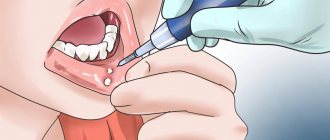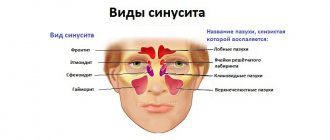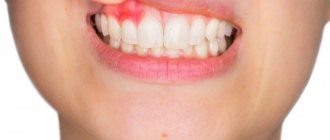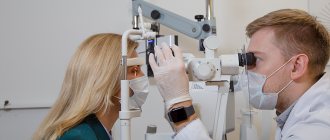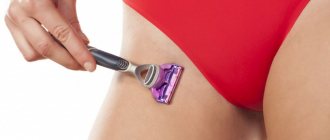01 June 2020
Cheilitis is an inflammatory process that affects the border, mucous membrane and skin of the lips. The disease has a long-term recurrent nature.
Cheilitis is an inflammatory process that affects the border, mucous membrane and skin of the lips. The disease has a long-term recurrent nature. In young people, the course is more favorable and self-healing is possible. In old age there is a risk of leukoplakia and malignancy.
Reasons for the development of cheilitis
The main causes of the disease include:
- Dermatoses seem to be the most common cause of cheilitis. Skin diseases such as psoriasis, lupus erythematosus, syphilis, tuberculosis, lichen, also often provoke inflammation of the red border of the lips.
- Thyroid diseases.
- Allergies to various kinds of external factors, professional activities.
- Adverse weather conditions.
- Hereditary predisposition.
- Decreased immunity, gastrointestinal diseases.
Prevention
In order to avoid the development of this type of cheilitis, patients with a clear tendency to develop it must follow a hypoallergenic diet that excludes foods such as strawberries, chocolate, citrus fruits, caviar and even coffee. In addition, it is necessary to reduce the consumption of carbohydrate foods and remove hot, spicy, salty and sour foods that irritate the esophagus from the diet.
To prevent the formation of scales and crusts, as well as dry lips, it is recommended to use oil-based lipsticks. In addition, it is necessary to carefully monitor the functioning of the intestines so that the body is not exposed to prolonged exposure to toxins.
Types of cheilitis
All types of cheilitis are divided into two groups:
- symptomatic (cheilitis, as a manifestation of the underlying disease);
- true (as an independent disease).
Types of symptomatic cheilitis and their clinical manifestations
The symptomatic group includes the following types of cheilitis:
- Eczematous - develops against the background of eczema, characterized by redness, swelling, burning and pathological changes in the skin of the lips. If left untreated, it becomes chronic.
- Macrocheilitis - this form of cheilitis is considered a component of Melkersson-Rossolimo-Rosenthal syndrome. There is severe itching and swelling of not only the lip, but also other parts of the face.
- Atopic - a predisposition to allergies to medications and food is a prerequisite for the development of inflammation. It manifests itself as peeling, redness, itching of the skin of the lips, and the formation of cracks in the corners of the mouth.
Prevention of cheilitis
If you would like to avoid such a problem as cheilitis on the lips, never forget about basic preventive measures:
- visit your dentist and therapist for a preventive examination at least 2 times a year;
- Get tested periodically to monitor your health;
- Maintain oral hygiene regularly;
- for excessive dryness of the skin of the lips, use ointments and special hygienic lipsticks several times a day (after meals and also before bedtime);
- use softening lip masks several times a day;
- take vitamins and watch your diet (with a lack of vitamins, some forms of cheilitis can develop);
- If any damage to the skin or mucous membranes of the lips is detected, consult a doctor,
- temporarily avoid consuming acidic foods and drinks, as well as other ingredients that may irritate damaged areas of the skin;
- treat erosions and ulcers in a timely manner when they are first identified, but always consult a doctor before using any anti-cheilitis ointment, medication or paste.
Types of true cheilitis
True cheilitis includes:
- Contact - manifests itself as a result of the body’s reaction to contact with an irritant: cosmetics (determined mainly in women), the bad habit of holding a pen or pencil in the mouth, professional activity (musicians due to prolonged use of the mouthpiece of a wind instrument) Characterized by redness, itching, feeling burning, swelling of the lips.
- Actinic - involves the development of an inflammatory process as a result of special sensitivity to natural phenomena: sunlight, wind, frost, radiation. It manifests itself as small blisters or erosion, swelling of the red border. This type of cheilitis is also called meteorological.
- Exfoliative - occurs mainly in women. The development of pathology occurs against the background of depression, anxiety, and various disorders of the nervous system. The main symptoms are dryness, severe, prolonged peeling of the lip border. Exfoliative cheilitis has two forms: dry and exudative. With exudative inflammation, crusts form, causing pain in the patient.
- Glandular - occurs against the background of hypertrophy of the minor salivary glands. This phenomenon can be congenital (appears after puberty) or acquired as a result of chronic inflammation. There is a risk of suffering from glandular cheilitis in people with periodontal disease, numerous carious cavities, after lupus erythematosus, and leukoplakia. It is initially characterized by increased dryness, which does not disappear with the use of hygiene products. Later - the presence of cracks due to the constant exposure of saliva to the red border of the lips. 20-30% of patients with glandular cheilitis develop squamous cell carcinoma. It is necessary to take a responsible approach to the treatment of this disease and seek qualified help from doctors in a timely manner - surgical intervention may be required.
Symptoms and signs depending on the type of cheilitis
The accepted classification of cheilitis makes it possible to clearly establish the type and causes of the disease, as well as to identify the characteristic signs of the pathological process:
- Exfoliative cheilitis is localized on the red border of the lips. It has a clear gender link: it occurs more often in women. The main symptom is peeling of the lips due to neurological disorders: stress, depression, anxiety. Often the inflammatory process develops against the background of hyperthyroidism, or intense activity of the thyroid gland. The danger of exfoliative cheilitis is its ability to be inherited as a genetically fixed change in the body’s immune system.
A feature of exfoliative cheilitis is localization only on the red border of the lips, while the mucous membrane and skin around the mouth remain intact. In most cases, only part of the border is affected, while areas at the corners of the mouth usually retain their appearance. If a patient has dry skin, he often complains of tightness of the lips, the appearance of scales, and a burning sensation. It is almost impossible to completely cure exfoliative cheilitis. The disease proceeds along a sinusoid, sometimes exacerbating, sometimes disappearing under the influence of medications and external factors. Without medical supervision and if you refuse to take a course of treatment, large bleeding crusts form on the lips, which cause discomfort during conversation and eating.
- Glandular cheilitis develops against the background of pathological proliferation of the salivary glands. A humid environment creates favorable conditions for pathogenic microorganisms, as a result of which the mucous membrane becomes easily infected. If the pathology of the salivary glands is congenital, the probability of developing glandular cheilitis is 100%. The risk group also includes patients with dental problems: untreated caries, periodontitis, tartar, etc.
In some cases, glandular cheilitis develops as a result of damage from waste products and the breakdown of pathogenic microorganisms. The disease is more often diagnosed in patients over 30 years of age and is localized on the lower lip. Primary symptoms are dry lips and the appearance of painful cracks. Usually these symptoms are ignored, and attempts are made to combat them with local cosmetic products. Without treatment, the problem worsens: erosions and bleeding wounds appear at the site of cracks. Involuntary licking of dry lips aggravates the pathological process, which leads to their further dryness.
- Contact allergic cheilitis is caused by exposure to an external allergen. This could be the chemical composition of lipstick, microorganisms on the surface of pencils or pens, which the patient is accustomed to often holding in his teeth during work or creative activities. Cheilitis is considered an occupational disease among musicians who are forced to hold the mouthpieces of instruments in their mouths for a long time. The symptoms of this type of pathology are quite common. Patients complain of itching, swelling, burning and inflammation of the lips. After prolonged contact with the allergen, blisters appear on the skin, the rupture of which opens small ulcers and erosions. In the chronic stage, the disease makes itself felt only with minor itching and peeling.
- Meteorological or actinic cheilitis is a reaction to weather conditions. For a sensitive organism, radiation, wind, cold or solar radiation are equally dangerous, provoking the appearance of characteristic symptoms: burning and itching, large crusts and erosion of the mucous membrane. With prolonged exposure to unfavorable climatic factors, the formation of small bubbles with liquid contents is possible. The dry form of cheilitis is considered the most dangerous for patients. Its first symptoms in the form of itching and burning are harmless. However, with prolonged development and lack of treatment, malignancy is possible - the degeneration of affected cells into a malignant formation.
- Atopic cheilitis is a type of skin disease: atopic dermatitis and neurodermatitis. The disease develops against the background of an allergic predisposition of the body, which reacts to cosmetics, perfumes, food and exposure to pathogenic bacteria. In addition to the usual symptoms, there is dryness and damage to the skin in the corners of the mouth, and intense peeling of the face.
- Hypovitaminous cheilitis develops against the background of a lack of B vitamins in the body. Patients usually complain of dryness and burning of the tongue and lips. Vertical cracks and small peeling scales are visible on the skin. The tongue increases in size, and teeth marks become visible on it.
Are you experiencing symptoms of cheilitis?
Only a doctor can accurately diagnose the disease. Don't delay your consultation - call
Treatment of cheilitis
This disease requires special treatment, depending on the cause, type and degree of the inflammatory process. The main methods of treating cheilitis:
- local treatment of the surface of the skin of the lips with disinfectant solutions, ointments, vitamin oil solutions;
- physiotherapeutic methods: Bucca radiation, ultrasound, laser therapy;
- a course of vitamin therapy;
- rinsing the mouth with decoctions of medicinal herbs.
If necessary, to eliminate the causes of the disease, specialized specialists may be involved: a dermatologist, an allergist, an infectious disease specialist.
Treatment
For atopic cheilitis, treatment is expected, aimed primarily at cleansing the body. Most often, the doctor prescribes desensitizing procedures with the parallel use of anthistamines (fenkarol, suprastin, claritin and others). In addition, vitamin B preparations are prescribed.
If the inflammatory foci do not disappear for a long time, the doctor will explain to you how to treat atopic cheilitis using hormonal and corticosteroid ointments. For more serious lesions, the patient may be prescribed a course of intravenous injections of sodium thiosulfate or histaglobulin.
Allergic cheilitis
A disease that develops in allergy sufferers upon contact with an allergen and affects the surface of the lips. Typical manifestations of this type of cheilitis are a feeling of itching and burning on the lips, dryness and significant discomfort. The lips begin to dry and peel, and the scales of dead epithelium begin to flake off.
The main cause of this disease is the patient’s increased sensitivity to external irritants, in particular to allergens. Allergic, or, as it is also called, contact cheilitis can develop gradually.
It all depends on the patient’s personal sensitivity to allergens, and it can develop over several weeks, months and even years. The duration of this process is determined by the peculiarities of the endocrine system, as well as the degree of manifestation of allergic reactions.
This disease practically does not appear in children. According to statistics, most patients with allergic cheilitis are women over twenty years of age.
Causes of the disease
In most cases, allergic cheilitis is caused by contact allergic irritants. Among the most common allergens that cause cheilitis is lipstick. It is not the lipstick itself that is dangerous, but the substances it contains - rhodamine, eosin and others. Provoking factors also include low-quality dental implants and plastic dentures.
Allergic manifestations may appear after contact with citrus fruits, as well as in patients who have the habit of chewing pencils or pens. The disease is also common for those whose work involves playing wind instruments or hazardous chemical production.
Symptoms of the disease
The disease manifests itself as hyperemia and swelling of the lips, as well as a sensation of itching and burning, accompanied by the formation of erythema. Small painful blisters appear and burst on the affected areas of the lips. If the pathogenic process is prolonged, over time, small scars and scars will form in their place on the lips. Dry lips only increase over time.
Inflammation almost never extends beyond the red border around the lips. In rare cases, it may spread to adjacent skin. Sometimes the inflammatory process moves to the oral mucosa. This form of allergic cheilitis is characterized by hyperemia (significant redness of the tissues), the appearance of noticeable swelling of the tissues, and when trying to palpate, pain occurs.
Diagnosis and treatment
Diagnosis of the disease is carried out by a dentist together with an allergist. To determine the allergen, it is necessary to conduct allergy tests.
When making a diagnosis, it is important to distinguish allergic and atopic cheilitis, as well as exclude exfoliative and actinic cheilitis. Treatment of this disease includes the mandatory elimination of the irritant or allergen that caused it.
Systemic (general) and topical (local) drug therapy is used. General therapy refers to the use of medications taken orally. To relieve allergy symptoms, a course of antihistamines is used. If the case is sufficiently complex, the use of corticosteroids may be indicated. In addition, calcium supplements may be prescribed.
Local treatment of allergic cheilitis includes the use of a variety of emollient oils, ointments and balms based on sea buckthorn, vitamin E and others. To avoid the recurrence of the pathology, it is necessary to take an allergy test in order to eliminate any contact with the allergen in the future. It is also advisable to reconsider your diet and carefully consider the choice of cosmetics.
Diagnostics
Due to the similarity of some symptoms, atopic cheilitis can be confused with manifestations of actinic, exfoliative and allergic cheilitis. The main differences that allow for effective diagnosis are the typical skin lesions present on other parts of the body. Most often they are located in the least protected places with thin skin (elbows, face, hollows under the kneecaps).
If you notice typical symptoms of this type of cheilitis, contact your nearest clinic that provides services to a dentist, otolaryngologist, allergist, gastroenterologist and dermatologist. These doctors will help you conduct an examination, make a diagnosis and prescribe appropriate treatment.
Glandular cheilitis
The clinical picture of glandular cheilitis is recognizable - the bumpy surface of the red border of the lips with droplets of “dew” - a light transparent liquid from the excretory ducts of small glands. After evaporation, the surface is dry, with cracks and erosions. The patient begins to worry not only about the appearance, but also about pain, swelling, and yellow-green or brown-black crusts.
Despite the fact that the clinical picture is quite typical, it is necessary to exclude diseases such as Miescher granulomatous cheilitis, sarcoidosis, Melkersson-Rosenthal syndrome, and Crohn's disease.
Etiology of glandular cheilitis
The etiology of glandular cheilitis is unknown, but hyperplasia and heterotopia of the minor salivary glands are of great importance. Develops on the lower lip along the Klein line in people over 30 years of age.
Treatment of glandular cheilitis
Treatment of glandular cheilitis is surgical - removal of the entire Klein zone with displaced glands. Deep electrocoagulation of the gland parenchyma or laser therapy is acceptable.
What kind of disease is this?
Cheilitis is a skin pathology that manifests itself as damage to the lips:
- change in their normal color (blanching, blueing, redness);
- the formation of areas with weeping skin (maceration), the appearance of ulcers;
- cracking of the skin around the lips;
- dryness and burning of the mucous membrane;
- discomfort when opening the mouth.
The disease often occurs along with the formation of a jam in the corners of the lips. This disease is called cheilosis.
Despite the fact that both pathologies belong to the same group of diseases, there are specific differences between them:
- cheilosis is a dental disease that is caused by the penetration and proliferation of bacteria or fungi in the corners of the mouth; cheilitis can spread over the entire surface of the lips and cover small areas of facial skin;
- The cause of cheilosis is most often violations of the use of removable dentures, diseases of the teeth and gums, excessive salivation, nutritional deficiencies and hypovitaminosis, and the most common factors for the occurrence of cheilitis are external influences (changes in air temperature, ultraviolet or radiation exposure, irritation from salt water, wind), and also a number of chronic diseases in the body.
Sometimes it is difficult to determine the difference between these diseases and in general practice they are combined, therefore in the medical literature their common designation is often found - “cheilitis (cheilosis)”. The course of these pathologies is most often chronic, with alternating periods of exacerbations and remissions.
Atopic cheilitis
Atopic cheilitis is a symptom of dermatitis or neurodermatitis in children and adolescents from 7 to 17 years old. Genetics comes to the fore among the factors causing inflammation. Klinkartina is characterized by damage to the red border of the lips and skin in the area of the corners of the mouth, but does not extend to the mucous membrane. The patient is concerned about itching, erythema, swelling with inflammation of the skin in the corners of the mouth. Then peeling appears. Desensitization and corticosteroids are the treatment of choice for atopic cheilitis.
Meteorological cheilitis
Regardless of the time of year, meteorological cheilitis occurs in response to unfavorable weather for the body. The disease is chronic and occurs more often in men. The border of the lips is infiltrated, dry, congestively hyperemic and covered with small crusts.
Treatment of meteorological cheilitis consists of protecting the lips with balms and vitamin ointments.
Eczematous cheilitis
Manifests itself as a symptom of facial eczema. Allergens include components of toothpastes, lipsticks, food substances, denture materials, and the like.
Eczematous cheilitis begins with redness and small blisters filled with yellowish serous contents. The bubbles merge with each other, burst, a weeping surface is formed, then crusts. All this is accompanied by itching and swelling of the lips. The lesion quickly spreads to the skin and corners of the mouth. The disease lasts for years with frequent exacerbations.
They treat it like skin eczema - desensitization, vitamins, ointments with corticosteroids.
How to treat cheilitis on the lips?
To identify the disease and determine its cause and type diagnosis ; the clinic usually carries out:
- skin tests and smears;
- Ultrasound of internal organs (thyroid, pancreas, liver, etc.);
- blood tests (general, biochemistry, antibodies, allergens, etc.) and urine;
- biopsy and histology of epithelial cells.
Treatment is selected according to the diagnosis:
1. General strengthening measures:
- systematic oral and facial hygiene;
- sanitation of the lip mucosa with aseptic solutions;
- getting rid of irritants (nicotine, alcoholic beverages, the habit of biting or licking lips, hypersalivation, contact with allergens, solar radiation, etc.);
2. Drug therapy
- local treatment, antibacterial or glucocorticosteroid ointment (as indicated);
- taking antihistamines;
- pain relief for severe pain;
- a course of antibiotics, antiviral, immunostimulating agents (depending on the type of cheilitis).
3. Physiotherapy:
- ultrasound;
- UHF;
- electrophoresis.
4. Surgical treatment:
- electrocoagulation;
- laser cauterization;
- cryodestruction.
Drugs
Medicines traditionally used in the treatment of cheilitis:
- Prednisolone;
- Erythromycin;
- Doxycycline;
- Diphenhydramine;
- Suprastin;
- Infliximab;
- Methotrexate;
- Zinc;
- Boric acid;
- vitamin A, vitamin B, PP, etc.;
- Roxithromycin;
- Peridoxin;
- Sulfasalazine;
- Kenalog 40;
- Tacrolimus-teva;
- salicylic acid;
- sulfur;
- Bromine, Valerian, Motherwort;
- Elenium, Oxilidine, Seduxen.
Miescher granulomatous cheilitis
Rare chronic diseases of the lower lip include Miescher's granulomatous cheilitis, which sometimes occurs with exacerbations. The causes of the disease are still unclear. The course is painless, and the patient looks like after unsuccessful lipofilling, and only sometimes small vesicles, erosions and crusts form.
It should be borne in mind that this is one of the forms of Melkersson-Rosenthal syndrome and is differentiated from Crohn's disease, sarcoidosis, glandular cheilitis, angioedema and lymphangioma. It is treated by removing the affected lip tissue.
Abrasive precancerous cheilitis Manganotti
Manganotti cheilitis occurs in men over 50 years of age, most often on the lower lip. There must be one or more erosions of a round or irregular shape with a smooth red surface on the red border of the lip. In some patients, crusts form on it. They can recur and become malignant.
We distinguish Manganotti cheilitis from the erosive form of lupus erythematosus, lichen planus and leukoplakia, pemphigus, exudative erythema multiforme and herpetic erosion, primary syphiloma.
Treatment of cheilitis by eliminating local traumatic factors. A concentrate of vitamin A, nicotinic acid, methyluracil, corticosteroid ointments, and epithelializing ointments are effective. If conservative treatment within 1 month does not lead to epithelization of erosion, the lesion is removed.

